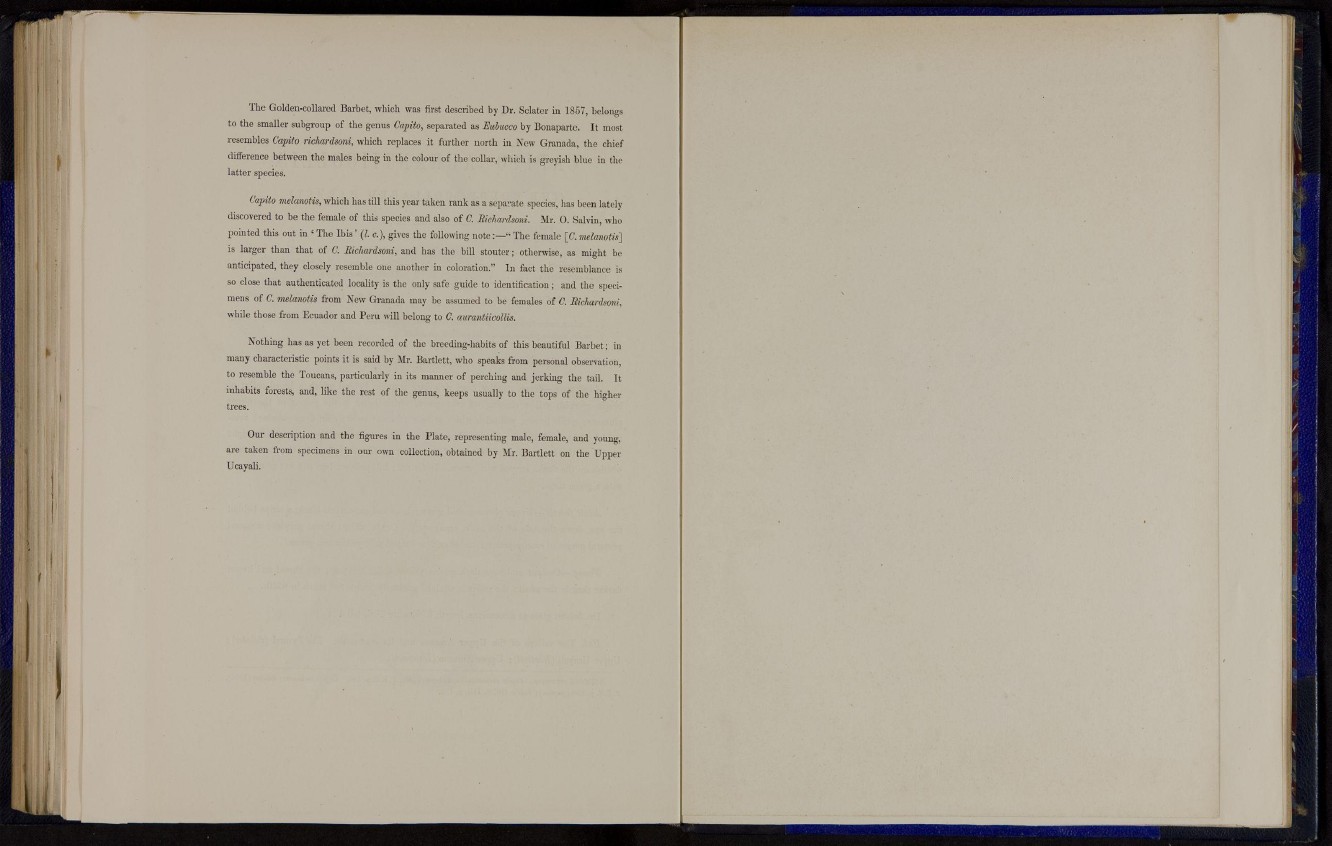
The Golden-collared Barbet, which was first described by Dr. Sclater in 1857, belongs
to the smaller subgroup of the genus Capito, separated as Eubucco by Bonaparte. It most
resembles Capito richardsoni, which replaces it further north in New Granada, the chief
difference between the males being in the colour of the collar, which is greyish blue in the
latter species.
Capito melanotis, which has till this year taken rank as a separate species, lias been lately
discovered to be the female of this species and also of C. Richardsoni. Mr. 0 . Salvin, who
pointed this out in ' The I b i s ' (7. c), gives the following note:—" The female [ft melanotis']
is larger than that of ft Richardsoni, and has the bill stouter; otherwise, as might be
anticipated, they closely resemble one another in coloration." In fact the resemblance is
so close that authenticated locality is the only safe guide to identification; and the specimens
of C. melanotis from New Granada may be assumed to be females of 6'. Richardsoni,
while those from Ecuador and Peru will belong to ft aurantiicollis.
Nothing has as yet been recorded of the breeding-habits of this beautiful Barbet; in
many characteristic points it is said by Mr. Bartlett, who speaks from personal observation,
to resemble the Toucans, particularly in its manner of perching and jerking the tail. It
inhabits forests, and, like the rest of the genus, keeps usually to the tops of the higher
trees.
Our description and the figures in the Plate, representing male, female, and young,
are taken from specimens in our own collection, obtained by Mr. Bartlett on the Upper
Ucayali.